Resources
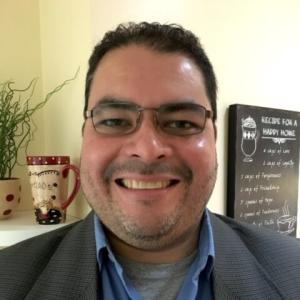
One of my social media names is “salsasanchez,” a not-so-subtle hint that I love everything about salsa music! Its history, genres, sounds, musicians, and, of course, the dancing! As a bass player, the only thing I love more than dancing salsa is playing the salsa groove on my instrument—or better yet, playing it while dancing! My picture of the new creation includes playing an upright baby bass in a Rubén Blades’ salsa band. But what does salsa have to do with cultural health? Could salsa music foster healthy forms of engagement with neighbors from cultures other than our own? In our seminary’s latest round of curriculum review, cultural health became one of seven desirable health outcomes in the formation of our students for pastoral ministry. I was assigned to assist first-year incoming students with an initial way to assess their levels of cultural engagement. As a theoretical framework for this initial self-assessment, I suggested thinking in terms of three levels of interaction with the cultural other, namely, multicultural, cross-cultural, and intercultural engagements—the third option being the more involved or deeper (and yes, healthier) form of interaction to work towards. The multicultural level merely signals an awareness of the presence of people from multiple cultures in our midst. Such an awareness is a first step in cultural engagement and may lead to knowledge of the other at a theoretical level. The image that comes to mind is that of parallel planets (worlds) that are aware of each other from afar but do not have meaningful contact with one another. It is the least demanding form of cultural health. The cross-cultural level moves beyond awareness of the cultural other toward movement into the other’s cultural world. An apt image for this level is a bridge, which provides a path from one world into the next. Although cross-cultural language can promote more involvement with the cultural other, it can also fall prey to unilateral forms of engagement where the “higher” culture crosses into the “lower” culture to change it—a one-sided crossing that gives rise to unhealthy paternalism and dependency. Which leads us to the intercultural level, the most demanding engagement. The image of a team working together toward a common goal, with each member contributing something unique to the community, best gets at the goal of intercultural collaboration. Hopefully, such collaboration leads to deeper relationships of mutual interdependence in which cultural others move from being strangers toward living as neighbors and friends. To move from my three-level theoretical paradigm into a simple pedagogical tool for self-assessment, I imagined how the use of salsa music could creatively assist students to get an embodied sense of these levels of cultural health in a classroom setting. Enter Rubén Blades! I played one of his songs and asked students to listen for the “clave” rhythm (the groove that makes salsa work) in the piece, which I demonstrated for them by clapping my hands to the tune La canción del final del mundo. The students’ first task was simply to listen to and find the clave in the salsa—an exercise in basic multicultural awareness. But then, I asked students to perform a cross-cultural exercise, to go a little deeper in their engagement with the cultural other by clapping the clave themselves. Some struggled, some succeeded, but all had crossed into the world of the clave! They were not only aware of the sounds of salsa, but participated in music-making in a different (although to some extent, artificial) cultural environment. Finally, I demonstrated for students what a salsa clave looked like in dancing, showing them the basic steps involved. Then, I asked if any of them would be willing to try out the dance. Volunteers agreed to dance next to each other, replicating my footwork to the best of their abilities. Soon enough, we were engaging in an intercultural exercise, one in which we were collaborating in practicing and performing a salsa piece together. Others in the classroom did not dare to dance, but were happy to keep clapping the clave. Some simply listened in awe. Which shows how students at our institutions are always operating at different levels of cultural health with some cultural other. The creative use of salsa music to challenge cultural comfort and instill a vision for a more generous engagement gives me hope in a healthier world—indeed, in a new creation—where we dare to work and play together in clave time. Let’s salsa!
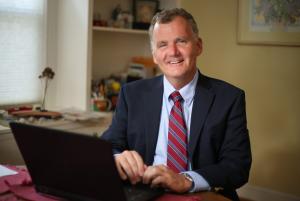
Trust forms the basis for human growth, as many learned from Erik Erikson’s psychological stage theory. Infants need consistent, predictable, and reliable connection and responses from caregivers for healthy development. These qualities facilitate an environment that allows for the emergence of inner confidence and strong emotional bonds with others. While we are born with the capacity for trust, we learn to trust through lived experience over time. A piece of theory from D.W. Winnicott, British child psychiatrist, liberates caregivers and teachers alike from the burden of getting everything just right. Winnicott offers a supportive message to the tired and weary: you don’t need to be perfect. “Good-enough” is just fine. Reliable caregivers put supportive provisions in place, and they create space for others to discover and learn on their own. Caregivers and teachers stand close by and ready to respond. During the COVID pandemic, I have taught primarily in two modes: completely asynchronous courses using Blackboard learning modules, and blended courses using synchronous Zoom sessions and Blackboard modules. It has taken time to develop the skills to teach online. Thankfully the learning curve began well before the urgency of this time. When I think about “good enough” teaching, I need to check my own inclinations toward perfection, the need to: formulate precise learning objectives, create crisp podcasts and videos, and develop clear PowerPoint slides, among others. Certainly, these aspects of teaching matter. Participants need to be introduced to theory and practices and have their competence assessed. Yet, trust as an embodied capacity of being tuned in and responsive to course participants has always been an aspect of effective teaching and learning in some fields and for some faculty. Since the onset of the pandemic, such practice has taken on new significance. Course material opens participants to others’ pain as well as their own. I have observed body language and read reflections that reveal genuine struggle, trauma, and wrestling. I empathically respond to participants. I exercise caution not to coerce sharing of information or details that would leave the participant feeling exposed or overly vulnerable. Noticing the gesture or the comment is often sufficient. Embodying trust in the online/virtual environment is not about catching every nuance. But it is about practicing good enough teaching that tunes in and follows through on body language and verbal and written comments. Teaching online during the pandemic requires instructors to model trust for course participants. In a therapeutic relationship, a counselor creates an emotional and physical environment for care seekers to express themselves without fear of judgment. We certainly expect such trust to be demonstrated by a trained clinician. Instructors foster trust by taking seriously participants’ experience as they encounter course material. Fortunately, course instructors in their modeling of trust give permission for others in the class to offer their own supportive comments. Trustworthy instructors do not gloss over glaring statements that beckon for attention. In a class I taught recently, a student introduced herself by saying that she was a bit apprehensive about how the class would unfold: “I am afraid of what it may break open in me.” I acknowledged the comment made in a video post and encouraged the participant to offer herself compassion. In the relative privacy of a course paper, the student referenced ongoing challenges in an intimate relationship. I responded to the statement with a brief, nonjudgmental, and supportive comment of my own. In so doing, I offered care for the student as a person even though it is not my role to elicit the further sharing of details. Paying attention and responding builds relationship and helps foster inner strength for participants in these trying times. Both online Blackboard discussions and Zoom seminar sessions have created the space for a level of intimacy that I would rarely expect in the physical classroom. Intimacy has to do with the quality of participants’ sharing: an authentic encounter with course material and their own experience that reflects deep rather than superficial connections. Such deep dives occur through discussion board posts, journal reflections, presentations, course papers, summary exercises, and academic advising appointments. Holistic and trust-filled teaching and learning requires attentive instructors who listen, observe, and respond. Academic deans and other personnel can also exercise administrative leadership by recognizing the importance and value of such formative practices in theological education. Limiting the number of participants in online classes allows for tailored instructor engagement with participants, arguably the heart of trust-filled teaching and learning.

Sometimes teaching strategies that seem newly discovered have been with you all along. When I was in the last stages of writing up my doctoral dissertation, I had just moved to the Canadian Maritimes. I was living on the outskirts of a small village in an old and drafty brick house overlooking glistening tidal mudflats. Beautiful but isolated and with no distractions, all that stood between me my PhD was a completed thesis. With this knowledge, I set about pursuing a whole variety of unrelated activities: I learnt to bake bread; I split 8 cords of firewood; I shoveled more snow than I had ever seen from the driveway; and I refinished, with great care, several nondescript pieces of old furniture. I also spent time creating hand-bound books. Twenty years on, while my circumstances have changed considerably, bookmaking has proven to be more than a mere distraction. Indeed, bookmaking has formed an enduring connection to my academic work and has shaped my teaching practice. It seems those early days of making books were prescient, in that over the years my academic interests have become increasingly concerned with biblical reception. I am fascinated by the ways sacred texts are continually being created and recreated, unbound and repackaged, unfurled and gathered up. Bookbinding manifests an applied, even somatic, example of these textual journeys. In a world of e-books and hypertext, one might consider bookbinding a quaint if not archaic practice, but that would overlook it as a very practical way of participating in the text. It involves doing something that actively shapes and changes the text. As the binder works the pages with their hands, the text literally takes on characteristics of changeability, pliability, and plasticity. Understanding textuality more broadly prompted me to consider the ways the biblical text functions, not only within the parameters of, say, John’s Gospel or the letters of Paul, but also as these narratives course their way through various points of reception within our cultural context. We read texts, we live texts, and we bind these texts into our experience as they trace paths through the familiar stories of our times. The ancient art of bookmaking offers a way of marking this capacity of the text to exceed the covers of the “Good Book” and extend its influence, traveling beyond its origins in unanticipated ways. This is a path of beauty, of craft and skill. It is a way of marking a journey that acknowledges a past and opens to a future. It also asks us to consider our relationship with the text. As the book accompanies us, where do we end and where does the text begin? Is the text passive or does it act upon us? Alternatively, are we the passive recipient, or the active shaper of the text? Are we a part of the text, our stories, contexts, interpretative reference points? In dealing with the Bible, it is not just about discovering a book, it is also about continuing to make and remake this book, to bind it up with our experience and to consider the future possibilities of both. What happens, then, when I ask my students to create books as part of their learning? When setting one alongside the other, how will the physicality of the book impact and direct their intellectual journey? Will the materiality of the book work to ground and open up the nonmaterial insights we often privilege in higher education? Making books is not just something fun to do, it is a way of using the material to open up the nonmaterial, and exploring the connections between reader and text. Just a few years ago, as part of my regular teaching of our department’s theory and methods course, I asked students to use portfolios to track their learning. The subject matter of this course tends towards abstract ideas, technical definitions, and counter-intuitive perspectives on the study of religion, and sometimes the “translation” of this learning into future courses is not as successful as I would like. My hope was that the practice of making a book would help condition and ground the course materials by adding a physical dimension to the learning experience, one that would connect learner and learning in transformative ways. In their portfolios, students were asked to create a book that gathered together concrete evidence demonstrating the development of their understanding, their acquisition of key skills, and the building of scholarly perspective. I chose learning portfolios because their flexible, evidence-based process allows for individual curation and creativity: they are an ideal venue for self-reflective learning. In one particularly memorable example, a student submitted a portfolio in the form of a soiled, slashed, and scorched wedding album—she had clearly used a sharp blade and set it on fire. The portfolio focused on the theme of post-modernism and religion and while the content was excellent, the form of the book itself gave expression to the ambivalence the student felt towards this particular theme, the threat it posed for “traditional values,” and the sense of loss it implied for established cultural practices. The covers of her album spoke of the struggle and the challenge of learning and the feelings of disillusionment that can sometimes accompany understanding and insight—particularly for a student of faith within a secular university context. Needless to say, the album brought to mind my own experience in that old house on the hill with this example of a student binding together a rich range of perspectives about who they were and what they were studying and grounding their learning journey in the familiar materiality of a book. Expressed in this album were sentiments that may not have been communicated via a traditional paper but were unmistakable as part of the material context for her work. The physical book provided a means for her to bind her learning journey, her experience, and her identity into a space that was richly layered and uniquely hers.
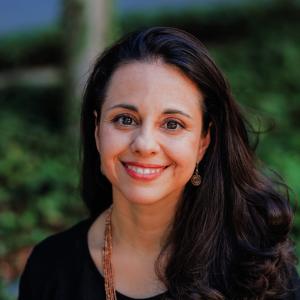
I took a deep breath and stepped out of my office dressed as the Greek goddess Athena. My historically inaccurate Amazon purchase had me in a “Roman Spartan Costume Helmet,” a “Roman Empress” costume over my clothes, holding a large plastic spear and a “Wonder Woman” shield. It was the best I could piece together online, and it would have to do—and this was for fun! In our Reacting to the Past (RTTP) game, The Threshold of Democracy: Athens in 403 B.C., the students had to self-start their first Athenian Assembly debate by reenacting a pig sacrifice (pig picture torn in half) while priestesses of Athena offered prayers. The president sat at his table, ready to start the proceedings. They were nervous. I was nervous for them. So, in a flourish of polyester and plastic I stomped into the classroom. I banged my spear on my Wonder Woman shield and stood behind the shocked priestesses. I whispered, “Go for it!” Student faces were a mix of shock and amusement; I was certainly not cool enough for a couple of them. But who cared? My priestesses pulled it off, the pig was sacrificed, and the president called the meeting to order. They debated and voted. The next week I gave extra credit for showing up in a toga, and about 20 percent of the class came wrapped in random bed sheets. In preparation for our five-session role playing game I told them repeatedly to “just have fun with it!” and fun was had! At the end of the game I had students fill out a “Win Sheet” where they discussed what they accomplished and reflected on their own game play. Paraphrases of some responses ranged from “I didn’t think that this would be fun, but it was,” and “I have never liked history before,” to “I normally don’t speak up in class, but this helped me overcome that” and “I met new people and made friends.” I took that for a win. For this church history professor assigned to teach Western Civilization, the RTTP role playing game provided a way to make a notoriously boring class engaging (for all of us). As it turns out, I had stumbled upon a “ludic pedagogy” or the “pedagogy of fun”: Sharon Lauricella and T. Keith Edmunds’ post, “A Serious Look at Fun in College Classrooms” discusses how the rigor of education is not lost in a fun environment, rather it lowers the cognitive load and increases intrinsic motivation and learning. It is probably no surprise to you that studies show that by making learning fun, student stress decreases and learning increases. The bigger question most professors ask isn’t, “Should I try this?” but rather, “What would this look like in my classroom?” Here are some ideas that I have tried: We reenact a house church with dollar store decor and food. During review week, students write either three church history characters or the attributes from them that they want to have in their own life on a dollar store Christmas ornament. At the end of the class around a common question, “Why do we have so many denominations?” I have students create their own church with their denomination of choice, or none. They design a building, pick a symbol for the logo, choose the music, governance style, etc. They are creative, and they enjoy the in-class activity “for fun.” When studying the Desert Fathers and Mothers, we learn to make prayer ropes from a YouTube video. The joy in this is that the knot is almost impossible to make, so we have a good laugh trying. Pre-pandemic, we went for pizza and then visited a Russian Orthodox Church together. A class did the Reacting to the Past’s “Trial of Anne Hutchinson.” (There was burning at the stake!) The Reacting to the Past “Council of Nicaea” role playing game is on my radar for the future. NOTE: These RTTP games are not intuitive to lead, you’ll need all summer to prepare. I highly recommend joining the association and the Facebook group for help. Plan on the game taking four to eight weeks of your semester. Clearly this is not an exhaustive list and many of you have your own successes to add. If you could take a moment to write down some of those in the comments, this could make it a very helpful space for all of us searching for new ideas.
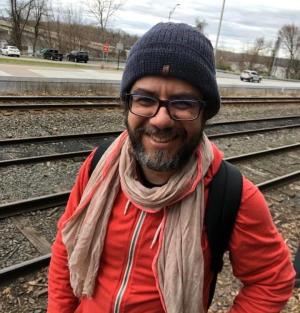
At the end of November I experienced a disastrous event: I lost about 1,600 files from my computer. For reasons I’d rather not discuss, all I know is that years of heavily curated material and so much hard work are gone. All of the books I’ve written are gone. All my syllabi, my class preparation, my texts—everything is gone. Some things from many years ago remain, but I don’t even have the courage to go look. It will only show what I don’t have anymore. Four years ago, I made a huge turn in my scholarship and am now trying to learn from the earth and working from a perspective that could be called the law (and lore) of the land. This deep change has shifted me and all my ways of knowing: classes, readings, pedagogies, resources, and relations. Entire worldviews! During these four years I took classes online and placed huge amounts of resources and readings in files, some of them with thirty, fifty, even a hundred pages, with journals, articles, websites, magazines, newspapers, list of books, and lots of references. Gone. I have written so much and given talks, some more academic and some less; all sorts of format and content of texts. All gone. I was working on a book that was missing just the introduction. Gone. My sabbatical proposal with the full first draft of an extensive play I was working on. Gone. A book I was writing about my experience of becoming a father to my three adopted kids; five years of texts and notes. Gone. As the days went by, I realized I had to teach a workshop without any materials at hand. I was reminded that I had to teach an intensive online seminar to graduate students in Brazil and again, I had nothing to rely on. I will stop here. I was so desolated I didn’t know what to do. I went to see Wonder, the tree I always visit to talk and listen to. While I was there, I realized that crusts were growing on her which belong to a family of fungi that live on “dead wood.” Wonder—my companion, the one who had been teaching me about my relation to the earth—was dying, or had died, I don’t know. My heart fell to the ground. If I had had a map under my feet, now this map had disappeared. There was nothing to guide me, or to turn back to, in terms of “where” my thinking, my writing, and my teaching were. Those who write, teach, speak, work, and play with words know that to lose what you write is to lose yourself. For writing becomes our body and soul; it is all biographical, even if not necessarily about ourselves. A very specific way of knowing shapes us into who we are and how we make everything meaningful and life possible. In fact, the where of knowledge has pursued me for a while. As a liberation theologian, the where has always been fundamental to how and with whom I think. Ecological thinking helped me realize that I need to think beyond the humans around me. It is interesting how we have replaced knowledge and memory from local, oral history to paper, books, cabinets, and libraries, and then to online files and the cloud . But when we lost our oral history, our bodies where detached from the land and it was as if our memory and knowing was placed elsewhere. Not fully within us anymore and “us” here means the whole landscape we live in. Thus, to know is to go somewhere else to reach a certain knowledge: a school, a class, a book, a library. The knowledge that we carry within us has been replaced by the knowledge we gain elsewhere, and it is only formally channeled by proper forms of scholarship. Surely, knowledge is always relational and we learn from one another. Surely Gramsci’s notion of the organic intellectual as the movement between formal and popular knowledge is fundamental. But what I am thinking here is more about how plantation and modernity have shifted knowledge from the land, and our relation to each other and to other species, to an outside abroad place. Colonialism and capitalism have turned us into renters of spaces and knowledges. We buy to know. This outside place is embodied by slave owners and the specialist, both of whom master the field. I cannot be a fully respected scholar if I don’t master my field. This process has also replaced our forms of memory. Uprooted from the land, we don’t carry the memories of the land anymore. We carry the memory of books or a file that holds the place of a certain knowledge. We have forgotten bodily (land/human/more than human) forms of knowing, practices where our knowledges lean on bodily knowing in relation to plants, animals, cells and are intrinsically implicated. This dis-location of knowledge creates various forms of anxiety. Entangled in a catch-22, this way of knowing comes with years of placing my knowledge elsewhere, in a place that is neither fully me nor fully outside of me. It hangs somewhere and I access it through my ability to buy a book, enter a school, or remember where it is in my computer. But now, without that imaginary/physical/online location where everything I have was placed and was lost, I do not know what to know anymore. One thousand six hundred files gone. Professor Marc Ellis said this to me: “It might be a prompt to move to another level of consolidating and deepening your thought.” I didn’t want to hear that, but something in me knew he was right. I am still battling this loss, but I think that what happened to me was not only about the evil online machinery spirits. It was actually me saying: I can’t take this weight of academic control, this burden of mastery, this desperation to know the field(s), this much running after knowledges, this much anxiety of knowing. For knowing in this modern process, is not about being, but being included. So, this can actually be a chance for me to change, even though I don’t know how exactly. But I know I have to pay attention to the where I live and that will suffice: it has to be in my body in relation to what is around me. I now want my body to know in relation with non-human species, perhaps I need to do far closer readings, pause, and go slower than I have ever gone. While one’s knowledge(s) are always in relation, it is only a perspective from a point and from that point we understand everybody else’s worlds. Each world in relation to many other worlds do not compose a totality under which a seamless background unites all the worlds. Rather, my point of perceiving is oriented and transformed by thousands of other worlds of other species also in flux and relating with thousands of other worlds composing different perspectives. None of these with any center to hold. I need a view of the world that is not only human. Another grammar of perception, a bodily one. I need to learn to see but also learn to be seen by the animals, for example. What do their eyes do to me? As I learn the names we give to plants, I need to learn the names those plants give to me. What do their bodies/feeling/being do to me? We breath because they created the oxygen! How do I learn the laws of the trees more than the laws of my religion? I want to be able to listen to the birds whom I feed in my backyard, to try to get to know them better. I am trying to get the food they like best, trying to understand their own perspective in relation to me and other worlds with which they relate. I want to live with them and with other species: plants, animals, beings. Entire worlds of knowledges! Stories of many worlds together! Yesterday I went to the store to buy seeds and the guy said: Use this so the squirrels will not come. And I said: But I want them to come! I want as many worlds together as possible. What about that possum? Oh, can we all live together? I don’t know what to do with mice—I have this utter fear of them, and I have kids at home. I put some poison out for them. Tragic! I want to know why so many worms are now out of the grass and frozen on the cement. I am struggling with the very few birds we have since it is winter. It’s brutal not to hear them loud every day. Rachel Carson always rings a cold sound in my heart when I can’t hear the birds. The bees are more often absent. The Codonoquinet river near my house; I need to know about this ancient presence and what makes a river possible. I am grateful for the many scholars in other fields and community leaders who are helping me known better now. I recently went to visit my mother in Brazil and I walked around my neighborhood paying attention to the trees I grew up with. In fifty-two years, it was the first time I paid attention to those who saw me growing and gave me a world to live in: the trees around my house! There were about thirty different trees in four streets! Ten of them had fruits! The memory of my father being a clown also visited me again. I realized I need to let my clown come out more fully and bring joy to myself and my kids. That makes me pause. To pay attention to my students differently. Do they carry any form of happiness that will help them brave through this difficult world we are living in now? A clown teacher? Other forms of imagination and creativity. No more demanding readings or results. Rather, unfolding worlds together… Learning to remember like the seeds do and to walk in the pace of the cows. Coming back from the data recovery store in downtown New York, I hopped onto the subway and there was a homeless man in front of me. He was eating. Not a single grain was left behind. He was so well organized, keeping his five small plastic bags near him. Perhaps that was all he had. I kept looking at him. I tried to make conversation with him, but he didn’t want to talk. He finished eating and put his head down. The train arrived at my station and I left. Coming out into the cold I was searching for some bird singing, but I couldn’t hear any. Only one thing captivated my mind: I lost one thousand six hundred files, but this man only has five small plastic bags.
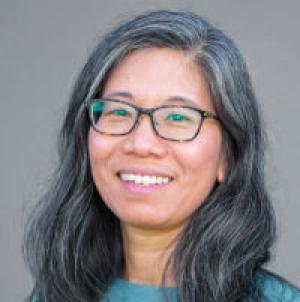
Self-care has become a familiar concept and an area of interest in faculty development and in student life. For many, self-care has become the substance of our reflections about personality traits that stem from our family of origin to concerns about longevity in our professional and vocational lives. The call to care for self does not go unheard, and for many there’s puzzling about hobbies, a reluctance to make the necessary changes to squeeze self-care into our already overloaded schedules, and perhaps even an eschewing of the import of self-care. A lot of people attempt to find an activity to take up for a couple of weeks (think New Year’s resolutions) that will quell the inner voice reminding us to check yet another box on the to-do list because of an intuitive sense that self-care is indeed a healthy practice. Why write a blog about something that doesn’t seem to require much deliberation? After all, isn’t a response to the invitation to care for self a simple yes or no? I have spent the past eight years piecing together a professional response to vocation. While I pursued a terminal degree envisioning a full-time faculty position somewhere, this picture of my ideal professional life has taken a much different turn. For a few years and holding on to my dream, with each cycle of yet another academic year and another application submitted, there was hope that a full-time faculty position, or any full-time job in a seminary, would eventually materialize. In the meantime, I was a busy adjunct instructor and pastoral minister, all the while juggling the demands of family life. With each year and with each declined application, I found myself in a cyclical pattern of saying yes to adjunct work for the following academic year because I was uncertain that I would have other opportunities. Clearly, this was not what I had expected after many years of hard work, nor did I think this was a way to honor the village that showed up so that I could complete the degree and graduate. Don’t get me wrong, there IS immense gratitude for the enriching opportunities to work and I continue to learn best teaching practices, even in areas that aren’t explicitly in my wheelhouse. With little to no job security, teaching and prepping for each new work opportunity is demanding because an invitation to teach again the following year is dependent on performance and whether there is a need. Increasingly and with significant changes in the terrain of theological higher education, graduates with doctoral degrees are required to reexamine their professional aspirations and shift their expectations according to the reality that there may never be a full-time teaching opportunity. From navigating different institutions as an outsider to developing and teaching new courses, individuals in part-time, contractual, and non-tenure track positions amass a full-time workload with hours accrued from various employers. And so, a resolute and affirmative response to the invitation to care for self in this professional adjunct reality is tempered by the constraints that come with financial strain, the emotional toll of job insecurity, the psychological weight of challenges to self-esteem, and the body’s physiological responses to stress, to name a few. None of these adjunct realities negates the import of self-care, and contractual, “part-time” adjuncts are in no way exempt from the need to care for body, mind, and spirit. Burnout is real and an accompanying and worrisome symptom of burnout is apathy. If an outcome of burnout is that instructors no longer have the capacity to care about students and all the good that happens in physical and virtual teaching spaces, then it’s imperative that teachers and institutions alike look closely at institutional culture and professional location to examine the particularities behind resistance to and an inability to say yes to self-care. Whatever the season and context of teaching, administration, church ministry, or any of the myriad ways people are employed, rather than judgement and shaming for the decision to forego self-care because of sheer exhaustion, lack of resources, and the unrelenting pressure to produce in order to matter, the invitation of this blog is to examine professional location and how this supports or obstructs your ability to practice self-care. And if the good work of theological education is meaningful, life-giving, and worth the marathon, perhaps it’s time to dig deep, to unplug, and to access all our grounding sources for a spaciousness that reminds us that we’re more than what we produce and that we’re worthy of care.
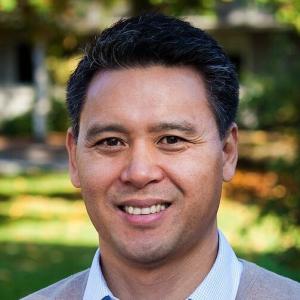
I came across a book during graduate work whose title still haunts me: When Work Disappears by William Julius Wilson (Alfred A. Knopf, 1996). The book is not without controversy as it argues how poverty came to exist in west Chicago because of manufacturing company flight. I am not writing, however, to discuss this argument or its controversy. I am writing about the title, which I cannot shake. It feels all too real; it is all too real for so many of us in theological higher education. This morning, I had a conversation with a good friend of mine, a colleague at another institution with whom I have walked during the last fifteen years in this field. They, unlike many aspiring and newly-minted PhDs, have full-time work. But they, like many PhDs already in the field, face the harrowing prospect of needing to find work elsewhere if they are going to make a living wage. It feels like a sucker punch to the gut when you confront the likelihood of needing to find work in a field that seems to get smaller by the year. You have trained numerous years only to be left facing the reality that full-time work is disappearing, and you wonder if a vocation can be had in a profession and field such as ours. I have more questions and curiosities than I do answers or proposals. Undoubtedly, you are reading this as I am writing it, with wheels turning about different macro-analyses and complexities to explain this upheaval: decreasing involvement in organized religion, generational attitudes towards the cost-value of (theological) higher education, the return on investment of this kind of education in future employment, and so on. This is not a tidy blog post that looks for answers or surefire solutions to very legitimate and far-reaching concerns. The primary intent of raising this topic is that I want to name publicly what many of us feel privately or at least discuss in smaller circles with trusted people. Our collective grieving is happening whether we widely acknowledge it in our respective learning communities, institutions, and guilds or not. Of course, there are theological academic institutions which will survive all of this. The financial wealth of some institutions, coupled with the social investment and concern for keeping these institutions alive, will help them weather the changes in the field. Innovative curriculum and flexible pedagogy might even stave off closure. These are promising trajectories. I wonder, though, how educators collectively, and individually, continue to keep vocation alive when they see their work disappear. Let me put it directly: When you lose (or are on the verge of losing) your faculty position or see colleagues lose theirs, what does this do to your vocation? There are many reasons why we get into the profession of teaching, mostly noble ones. I imagine that, at the heart, we get into teaching and become educators because of vocation. There is something in us that comes alive when we make an impact on the world and people through our teaching and scholarship. What then do we make of our vocation when our professional opportunities close? I do not ask this from afar. I experienced the disheartening reality of a school closure. I have worked on a vocational statement for the last thirteen years. I come back to it every so often as a probing and aspirational exercise. I ask whether this statement continues to describe who I am (probing), while I also look to the statement to guide me in who I am becoming (aspirational). After many revisions and wording changes, the commitment remains the same: my center, call, vocation, and fuel, is to help people live flourishingly. This is more challenging in today’s landscape because work is disappearing. I am adjusting as many of you are too. Checking in with a colleague, serving as a reference for someone doing all they can to secure a position, and having truthful conversations with colleagues as to why you voted to close the degree program they oversee—these are ways to currently express our vocation. There are other small and significant ways you and I keep vocation going. These are not novel ideas, but they take on a deeper quality because of the severe reality that collectively faces us. And if there is a shared vocation in theological higher education today when work disappears, perhaps this is it: that amid our vocation to teach and form is also a vocation to grieve loss in our field and to humanize people who make up and (hope to) carry out the field.
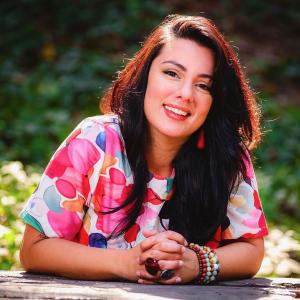
In Por Uma Educação Romantica (Papirus, 2003), Rubem Alves speaks about how he found his way to poetry. He describes how woundedness he experienced in life made him understand that literature, poetry, music, storytelling, and the visual arts were not only nutrients for violated and hungry bodies but also joy for anguished souls. He writes: “Science is fire and pans, indispensable kitchenware. But poetics is chicken and okra, delectable food for those who love this dish.” As an educator, storyteller, and world-maker, he was a compulsive fruidor de vita—he conjured new life into being. We have reached the end of a fourth semester touched by an ongoing pandemic that has brought so much loss and grief. Our families, our communities, and our learning spaces are filled with bodies that are carrying an overlay of stories, experiences, and memories that feel like webs spun out of un-rootedness, pain, and trauma. And I have been asking myself how to begin to undo the trauma that we have all metabolized. How can we redesign our classroom encounters, rituals, spiritual practices, and ways of knowing? How can we experiment with other ways of being, invent other vocabularies and grammars, other corporeal practices for grounding, creativity, and connection? I believe Rubem Alves would invite us to pay attention to the spaces where poetic inventions emerge—spaces of art making that are ripe with the potential to smuggle life, joy, and creativity back into these many landscapes of death. What kind of potent conjuring could happen if we cleaned our brushes, wiped our camera lenses, heated our welding tools, recovered our songs, dusted our instruments, located our yarn, filled our confined spaces with pulsating bodies that are not afraid to reinvent erotic grammars of playfulness and ritual, to heal these wounds? Art, as a way of feeling, knowing, and healing allows us to access what is hidden within our most intimate recesses. What our busy minds want to forget, our embodied artistic practices tend to re-member. From rage to grief to wonder, the arts help us touch, sense, and name our emotions and educate our affections while inspiring us to resist, denounce, agitate, heal, connect, and generate tools for speculative imagination, for integration of embodied, emotional, and intellectual knowledge. When we immerse ourselves in acts of creation, we have access to the visceral, the somatic life of the body: its reflections, limits, intuition, answers, desires, and needs. Through artistic languages, we can begin to weave the invisible back into the perceptible. Art also has the power to evoke, to create other possible worlds. And because of art’s power to provoke, we are able to sit with the trouble, to lean into instability, to practice unlearning, and to affirm our inherent capacity to be at once problematic and prophetic. In a way, and as Alves proposes, the arts remind us of the life that is buried beneath the weight of our responsibilities, our angst, and our pain. Sometimes, Alves affirms, life has to lay dormant for years, buried within our sepulchers… Sometimes life only has a chance after death. So, in the midst of the death that surrounds our days, weeks, and months, and the millions of lives lost to COVID-19, I share with you the work of an artist whose work has activated my classroom, reanimating and mobilizing teacher-learners to create otherwise, even in the face of impossibility. vanessa german describes herself as “a citizen artist who centers the exploration of human technologies that respond to the ongoing catastrophes of structural racism, white supremacy, heteropatriarchy, resource extraction, and misogynoir.” german’s work ranges from sculptures to performances, rituals, processions, installation, photography, and much more. As a way of sentir-pensar of the world, german’s work seeks to “repair and reshape disrupted human systems, spaces, and connections.” Her practice also engenders new models for being and becoming in the world that incorporate healing, creativity, tenderness, and collectivity to address our society’s most pernicious violences. In the work entitled Blue Walk, curated by Wa Na Wari, german staged what she named “” In the context of this pandemic and the interlocking systems of oppression, german’s performance invited participants to acknowledge “the holiness of the Black body on the living planet as a healing channel of release and power.” Performers touched, sensed, shared, and metabolized experiences of rage, grief, tenderness, laughter, and the need to rest. This particular pilgrimage was staged in September, during the Time-based Art Festival organized by the Portland Institute of Contemporary Art. Participants were invited to walk “in the power of the Blues. Moving in the power of Water, Creativity, and Dimensional Wholeness. The Ritual is the Goodbye Song and The Lifting Up Song. We learn this in a short period of togetherness pre-ritual. These songs are about listening, giving permission to the voice and the body, and taking up space and sky.” vanessa german’s potent performance enfleshes art as a way of feeling, knowing, and healing. Through storytelling, mixed media, assemblage of bodies, and textile, german mediates ritual and collective acts of togetherness to reclaim the right of Black people to share in power, spirituality, and presence. Non-Black participants are invited to witness, to be mindfully present, and to confront the ways in which we internalize and externalize anti-Blackness in our relations and lives. Collectively witnessing the work of artists such as german opens up a “capacity to relate deeply and respectfully across differences,” while maintaining a “receptivity to the unknown,” to borrow Laura Pérez’s language (Eros and Ideologies [Duke University Press, 2019] xx). Inherently polyvalent, these works have a tremendous power to connect, reverberate, and reveal what is hidden within our interiority. As sites for world-making and choreographing new possibilities of being, feeling, knowing, and healing, the visual arts can cultivate in us an orientation and openness toward wonder, mystery, and that which we have othered, forgotten, disposed of, or violenced. This pandemic, the ensuing uprisings, and the incapacity of governments to decently respond to the urgencies of our times have impacted us in ways that we cannot fully grasp at the moment. By inviting these works of art into our classrooms, learning communities, and academic spaces, I believe we can conjure new possibilities of life that allows us to sense and comprehend the world differently—even in the face of impossibility, interruption, and derealization. Works like Blue Walk are, indeed, nutrients for violated and hungry bodies as well as joy for suffering souls. *Photos by Tojo Andrianarivo. vanessa german, Blue Walk, curated by Wa Na Wari, September 2021, Portland Institute of Contemporary Art.
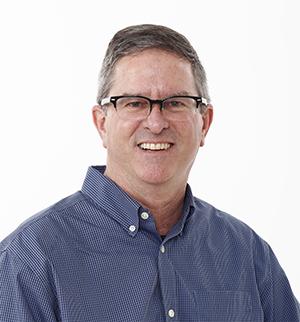
How fitting it is that as I began the final edits on this post, I ended up clenching my jaw, tensing my shoulders, and generally doing just the opposite of what I’m trying to say in this piece. My goal is to bring the benefits of self-care into the classroom. Self-care are two words I don’t use. But, fifteen years ago a Wabash Center mentor said, “You are really good at self-care.” My modes of self-care have morphed over the years, and now the main one is my visual art practice. What I am considering now are ways to facilitate artistic self-care among students. What might it look like to create space in classrooms for students to make art as a way of learning religious studies? How might students not only learn religious studies, but have the learning experience mimic the calm, creative moments of making art? I’m not saying that art is just about feeling good; no, it’s hard work, but a very different type of work than writing papers. I didn’t grow up drawing a lot, but I majored in art, sort of, and then dropped it after a year. The last two summers, I focused intensively on developing my art practice. Rather than thinking, “I really should be doing something else with my time,” I thought about how my linework asked questions; how the calming effects of artistic processes opened space to imagine my art as doing research. Of course, there would be a written element, but the art itself became the primary source for the writing. I was also preparing for my first solo gallery show, which was on hold for more than a year due to COVID-19. My research/artmaking for the show began with the question, “What would it be like to draw as a Buddhist?” Obviously, that question simply leads to innumerable other questions, but that’s part of the point: the merging of drawing and doing research. During my artist talk, I was describing the central piece—a five-by-ten foot vertical triptych—when I spontaneously blurted out, “This is not a hobby. This is who I am at the core of my being.” My next thought was, “Whoa. Where did that come from?” That moment solidified my resolve to facilitate similar experiences in the religious studies classroom. Yes, I’m dreaming a bit here, but it’s a dream I’m actively pursuing. I named the triptych, “Forgetting the Ox,” which is the seventh of ten stages on the path toward enlightenment, according to the Ten Ox-herding Pictures commonly used in Zen. My drawing illustrates—rather loosely—some parallels between my becoming an artist and the struggles of the ox-herder in locating his “true nature.” It didn’t take long for me to imagine an entire course designed around art-making as doing religious studies. I already regularly have students draw their metaphor of being a college student, their religious or moral autobiography as a one-page, six-panel comic, or an image of the Buddha without looking at reference material. These exercises feel like “easy days” from a student’s perspective. Honestly, sometimes these exercises feel like I’m not really teaching. But there is plenty of learning taking place: students relax, laugh, tell stories about their religious upbringing, and gain confidence in sharing more of themselves as they describe their drawing to their classmates. The metaphor drawing, in particular, leads to students taking risks and becoming vulnerable; for many this is their first time drawing anything in years. Class becomes self-care, if only for a short time. So why not build upon those experiences to learn course material, moving well beyond personal metaphors? What if, for instance, in order to learn about Buddhism, students were to create a series of images of the Buddha? In the process, they would make new connections to the course, and likely retain information far longer than normal. Plus, they would add the somatic/artistic element. I’m not ready to forgo writing assignments, but the writing would now incorporate a discussion of their artwork and how it integrated with their research. My own metaphor as a professor is radically different from the one I drew many years ago in a Wabash Center pre-tenure workshop. At the time, my drawing depicted a long winding path filled with obstacles. Today, I would draw a group of students on winding paths, with me off to the side, in awe of their creativity, ready to help them figure out their paths for themselves. The new metaphor is less about me, and more about empowering students as they create their own journey of self-discovery.
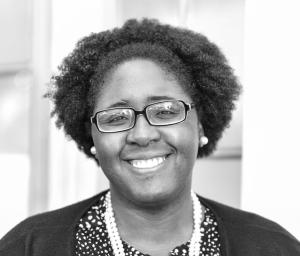
CREATIVITY IS… Learning in the theological academy needs to be liberated. It has been held hostage by standards of appropriateness authored by voices and ideologies long gone yet holding on. They can be quite static and unmoving. The solution? Creativity. But I’m not sure if theological institutions are truly ready for her, for she asks for too much. Within theological education, Creativity needs honesty. She requires both desire and attention to possibility as well as a sense of duty to hold failed systems of current practices accountable. She is bold and voluminous; veracious enough to name when she does not have the appropriate room to thrive. She will, without hesitation, mention how crowded institutional elephants can make a room (no offense to elephants, they are simply not spatially conducive to a healthy theological education environment). Creativity does not hold her tongue, for limit might deter her potential. She announces how holding on to ill-fitting things and anachronistic ideas takes space away from her truest emergence. And theological education is, unfortunately, a space unaware of its spatial misappropriations. Colonial roots can do that to you. Well, what can faculty do to welcome her into their classrooms? “Faculty in theological education,” Creativity would say without pause, “are captives to the institutionality of teaching.” That’s not the answer we were expecting. “I can’t work well, here,” she would continue. “Here, I need the opposite, a spirit of the apophatic. I can tell you where something is by naming where it is not, how it is by how it is not. Here, I need partners who understand the beauty of this refusal—of crafting the necessary in the midst of a mantle of negation. I need dreamers willing to be anti-institutional within their institutions. This clash, of refining through refusing, is where I am.” We can ask her for elaboration: “What does it mean to be anti-institution?” “It means to be me,” she will answer with nonchalance. “But how can an anti-institution institution exist?” we will surely press. “Have you checked the margins?” she will rhetorically inquire. ANTI-INSTITUTIONAL Check the margins. What will you find? Who will you find? Those who have historically been made the least of these. By virtue of their existence, many know Creativity and her bold requirements quite personally. To be creative in the theological academy means to actively resist the lure of traditional institutional priorities: maintaining the status quo financially and otherwise, re-enforcing institutional standards of rigor and knowledge, and continuing in the practice of institutional “speech-acts,” as Sarah Ahmed brilliantly calls them, where institutions claim their worded hopes of inclusion, diversity, and innovation as actual truth, though the world is aware they are not.[1] Creativity is naming where God is by illumining where God is not; remember, an apophatic spirit. To be sure, Creativity can exist within institutions; she has for years, but has she existed well? Freely? Is she permanent dweller or occasional guest? Is it possible, let alone desired, to make her host instead of hosted? To give her full reign of an institution? No. She is too risky. Total creative power would mean granting room for the ways of being and knowing that have always been in the room but have only known suppression. It would mean granting those who have been forced to make the margins their homes shared space in the center. And no one with institutional influence and say is interested in giving up the center. Creativity considers the historical pawns the priority instead of laborers towards the bottom line. The bottom line of budgets are amenable foes but not the only ones. The bottom line of certain standards of academic rigor, the bottom line of grades as the only means of intellectual analysis, the bottom line of fortifying academic structures created for the white men for whom theological education was created. Creativity wants—no, needs—not only the space of the classroom to leave a deep impression, but say over the entire structure of the theological educational system. Unprepared to acquiesce to such a demand, institutional heads will ask if it’s OK if she appears in the individual efforts of underpaid doctoral students, job-insecure adjunct educators, and exhausted minoritized faculty persons. She will reluctantly agree, or more like make do, but never stop asking in a nonchalant, rhetorical, inquiring tone, “Have you checked the margins?” There is a message in the margins: the classroom could be a space of influence—influence not synonymized as power, but a space where relationships between students and teachers, different forms of knowledge, and measures of intelligence can be reimagined. It can be a space where students’ experiences are taken seriously and where teachers do not have to take themselves so seriously. “Have you checked the margins?” How can the classroom become a platform for the periphery? What must be undone so that there is room for better? Many theological institutions still believe they must keep academic tradition for a church traditionally understood; Creativity instead asks, “What happens if minoritized students were the center in the classroom and institution as a whole? Do institutions want to learn their students? Do they trust marginalized experiences to be a true expression of the church universal?” “Have you checked the margins?” then is another way of asking, “Have you asked yourself?” [1] Sara Ahmed, “The Nonperformativity of Antiracism,” Meridians 7, no. 1 (2006): 104-126, especially 104.
Wabash Center Staff Contact
Sarah Farmer, Ph.D
Associate Director
Wabash Center
farmers@wabash.edu